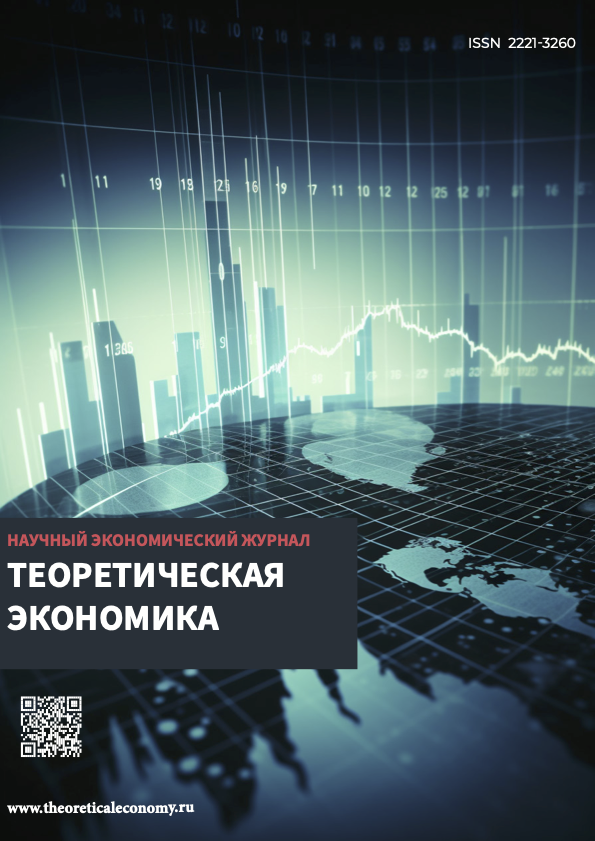Yaroslavl', Yaroslavl, Russian Federation
Yaroslavl', Yaroslavl, Russian Federation
Yaroslavl', Russian Federation
The relevance of the study is due to the fact that the negative dynamics of demographic processes (aging and population decline in Russia, «super mortality» from coronavirus in 2020-21, reduction in migration flows and mass relocation of Russians due to the beginning of SSO) creates significant challenges for the economic development of Russia. The aim of the study is to identify the relationship between the population and the dynamics of a number of macroeconomic indicators characterizing the Russian economy in the long term. The paper assesses the relationship between the number of population in Russia and migration growth, the rate of economic growth, the productivity index, the average wage, the number of the poor and the unemployment rate in the country. Correlation analysis was used to test the hypothesis of the paper. As a result of the study it was found that at the analyzed time intervals (taking into account time lags) there is a direct statistically significant relationship between the number of population in Russia and the rate of economic growth and inverse statistically significant relationship between the number of population and labor productivity, unemployment rate, as well as the average wage index.
population size, socio-economic development, correlation analysis, economic growth rates, Russian economy
1. Bloom, D. E., Canning, D., & Fink, G. (2010). The greying of the global population and its macroeconomic consequences. Twenty-First Century Society, 5(3), 233–242. https://doi.org/10.1080/17450144.2010.480826
2. Omar, M. S., & Nor, A. M. (2020). Macroeconomic Variables and Economic Growth: The Malaysian Perspectives. International Journal of Academic Research in Business and Social Sciences, 10(3). https://doi. org/10.6007/ijarbss/v10-i3/7046
3. Heller, P. S. (2016). The challenge of an aged and shrinking population: Lessons to be drawn from Japan’s experience. Journal of the Economics of Ageing, 8, 85–93. https://doi.org/10.1016/j.jeoa.2016.02.001
4. Dabrowski, M. (2019, December 20). Factors determining Russia’s long-term growth rate. Russian Journal of Economics. Non-profit partnership “Voprosy Ekonomiki.” https://doi.org/10.32609/j.ruje.5.49417
5. Aleksashenko, S. (2012). Russia’s economic agenda to 2020. International Affairs, 88(1), 31–48. https://doi.org/10.1111/j.1468-2346.2012.01055.x
6. Clements, B., Dybczak, K., Gaspar, V., Gupta, S., & Soto, M. (2018). The Fiscal Consequences of Shrinking and Ageing Populations. Ageing International, 43(4), 391–414. https://doi.org/10.1007/s12126-017-9306-6
7. Naso, P., Lanz, B., & Swanson, T. (2020). The return of Malthus? Resource constraints in an era of declining population growth. European Economic Review, 128. https://doi.org/10.1016/j. euroecorev.2020.103499
8. Miles, D. (2023). Macroeconomic impacts of changes in life expectancy and fertility. Journal of the Economics of Ageing, 24. https://doi.org/10.1016/j.jeoa.2022.100425
9. Kasnauskiene, G., & Michnevic, K. (2017). CONTRIBUTION OF INCREASED LIFE EXPECTANCY TO ECONOMIC GROWTH: EVIDENCE FROM CEE COUNTRIES. International Journal of Economic Sciences, VI(2). https://doi.org/10.20472/es.2017.6.2.005
10. Bloom, D. E., & Malaney, P. N. (1998). Macroeconomic consequences of the Russian mortality crisis. World Development, 26(11), 2073–2085. https://doi.org/10.1016/S0305-750X(98)00098-9
 This work is licensed under Creative Commons Attribution-NonCommercial-NoDerivatives 4.0 International
This work is licensed under Creative Commons Attribution-NonCommercial-NoDerivatives 4.0 International












